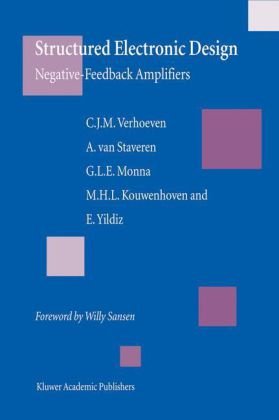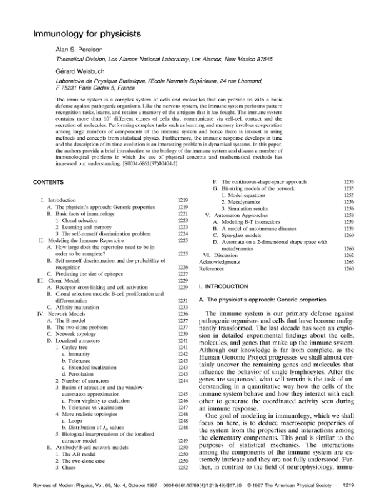Chris J.M. Verhoeven, Arie van Staveren, G.L.E. Monna, M.H.L. Kouwenhoven, E. Yildiz1402075901, 9781402075902, 9780306487323
Structured Electronic Design: Negative-Feedback Amplifiers presents a design methodology for negative-feedback amplifiers. The design methodology enables to synthesize a topology and to, at the same time, optimize the performance of that topology.
Key issues in the design methodology are orthogonalization, hierarchy and simple models. Orthogonalization enables the separate optimization of the three fundamental quality aspects: noise, distortion and bandwidth. Hierarchy ensures that the right decisions are made at the correct level of abstraction. The use of simple models, results in simple calculations yielding maximum-performance indicators that can be used to reject wrong circuits relatively fast.
The presented design methodology divides the design of negative-feedback amplifiers in six independent steps. In the first two steps, the feedback network is designed. During those design steps, the active part is assumed to be a nullor, i.e. the performance with respect to noise, distortion and bandwidth is still ideal.
In the subsequent four steps, an implementation for the active part is synthesized. During those four steps the topology of the active part is synthesized such that optimum performance is obtained. Firstly, the input stage is designed with respect to noise performance. Secondly, the output stage is designed with respect to clipping distortion. Thirdly, the bandwidth performance is designed, which may require the addition of an additional amplifying stage. Finally, the biasing circuitry for biasing the amplifying stages is designed.
By dividing the design in independent design steps, the total global optimization is reduced to several local optimizations. By the specific sequence of the design steps, it is assured that the local optimizations yield a circuit that is close to the global optimum. On top of that, because of the separate dedicated optimizations, the resource use, like power, is tracked clearly.
Structured Electronic Design: Negative-Feedback Amplifiers presents in two chapters the background and an overview of the design methodology. Whereafter, in six chapters the separate design steps are treated with great detail. Each chapter comprises several exercises. An additional chapter is dedicated to how to design current sources and voltage source, which are required for the biasing. The final chapter in the book is dedicated to a thoroughly described design example, showing clearly the benefits of the design methodology.
In short, this book is valuable for M.Sc.-curriculum Electrical Engineering students, and of course, for researchers and designers who want to structure their knowledge about analog design further.
Table of contents :
Preliminaries……Page 1
Contents……Page 6
Preface……Page 14
1. INTRODUCTION TO STRUCTURED ELECTRONIC DESIGN……Page 18
2. SYNTHESIS OF ACCURATE AMPLIFIERS……Page 44
3. NEGATIVE FEEDBACK……Page 84
4. NOISE……Page 102
5. NONLINEAR DISTORTION……Page 168
6. THE LOOP-GAIN-POLES PRODUCT……Page 206
7. FREQUENCY COMPENSATION……Page 224
8. BIASING……Page 258
9. DC SOURCES……Page 306
10. DESIGN EXAMPLE……Page 330
References……Page 368
Index……Page 372







Reviews
There are no reviews yet.